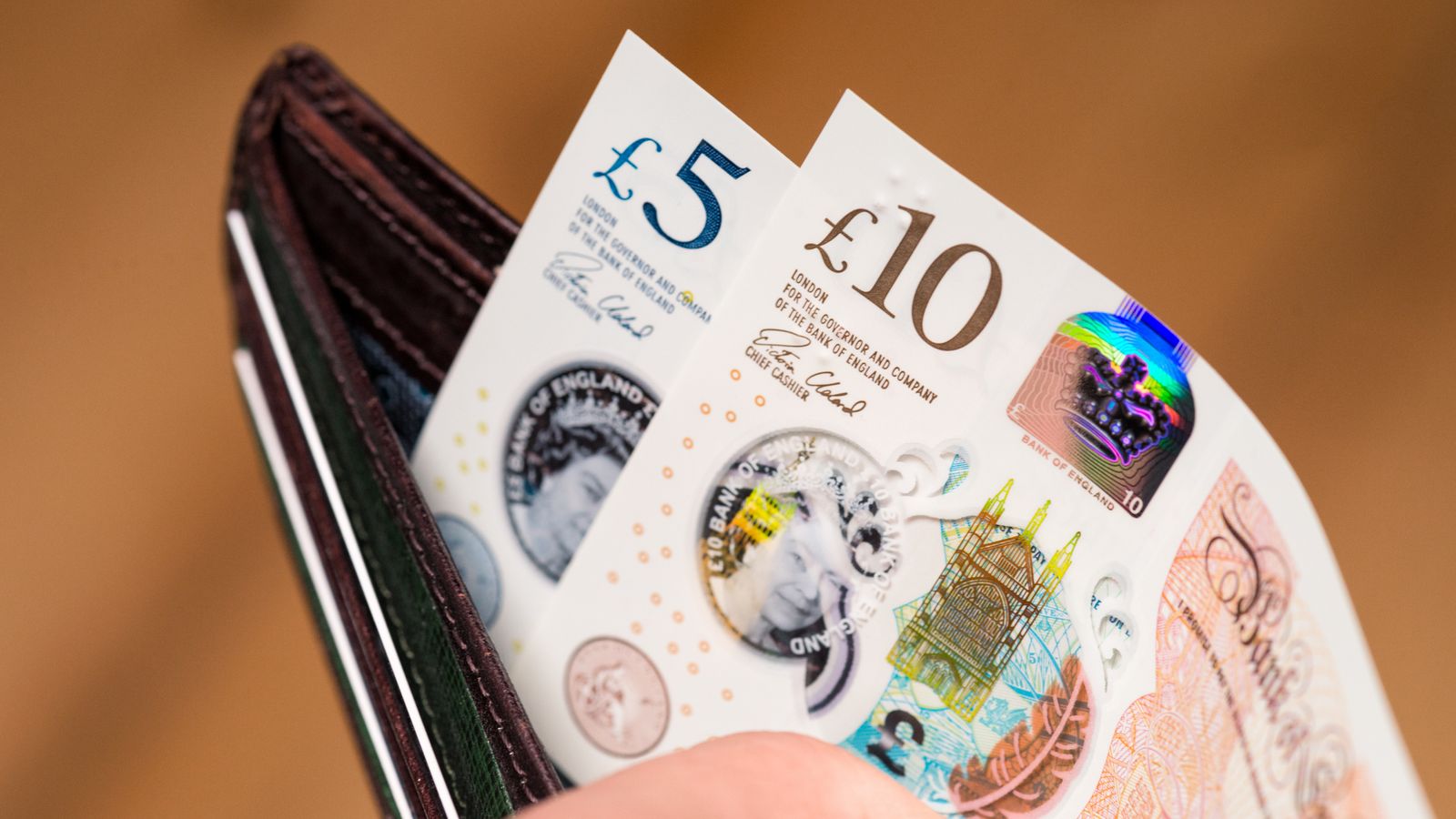The rate of inflation has remained at 4%, despite forecasters predicting a rise, official figures show.
The consumer price index measure of inflation stood at 4% in January, the Office for National Statistics (ONS) said.
Money latest: Inflation rate holds – as surprise US data leads to market sell-off
It’s the same as in December and below economists’ expectations, including the Bank of England.
The central bank forecast a 4.1% rate while economists polled by Reuters were expecting a rise to 4.2%.
Keeping prices rising was the energy price cap, which rose in the month, bringing up the cost of gas and electricity and the cost of second hand cars, which the ONS said rose for the first time since May.
But inflation stayed at 4% thanks to the first month on month fall in food prices in more than two years, the ONS added.
The cost of food dropped 0.4% from December to January with the overall rate of food inflation at 8%. Less than a year ago, in March, food inflation was at a 45 year high of 19.2%.
Also coming down in price was furniture and household goods, it said.
It’s likely a positive sign for the interest rate-setters in the Bank who have been raising interest rates, making borrowing more expensive, in an attempt to bring inflation down to 2%.
Also remaining the same as last month, and below expectations, is a key figure looked at by the rate-setting members of the Bank’s Monetary Policy Committee – core inflation, which came in at 5.1%. It measures the rate prices are rising but excludes energy and food which are prone to fluctuations.
There’ll be another inflation announcement however, for February, before the committee meet and decide their next interest rate move in March.
In response to the latest data, Chancellor Jeremy Hunt said: “Inflation never falls in a perfect straight line, but the plan is working; we have made huge progress in bringing inflation down from 11%, and the Bank of England forecast that it will fall to around 2% in a matter of months.”







